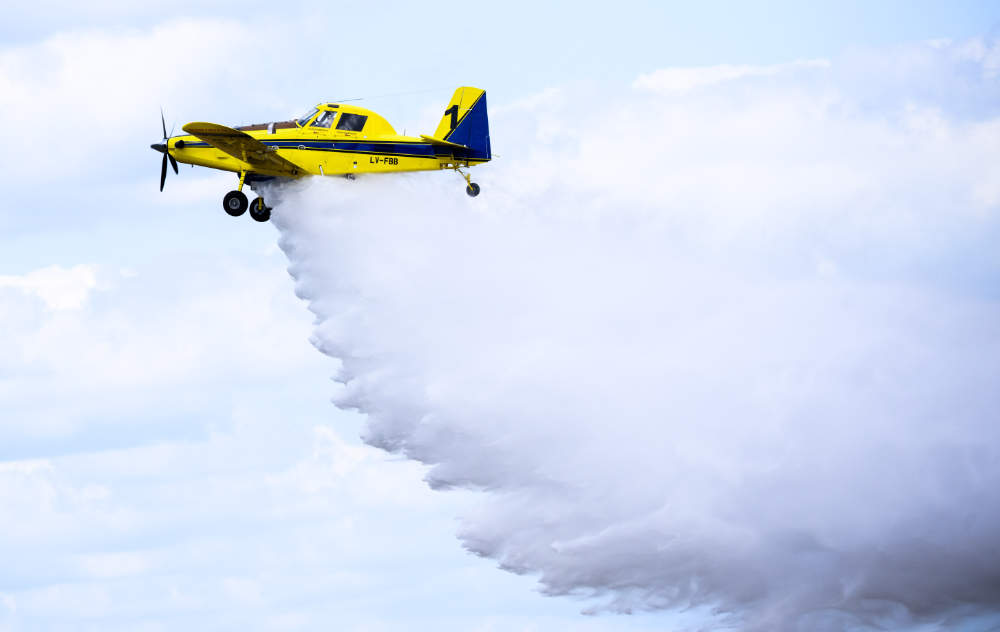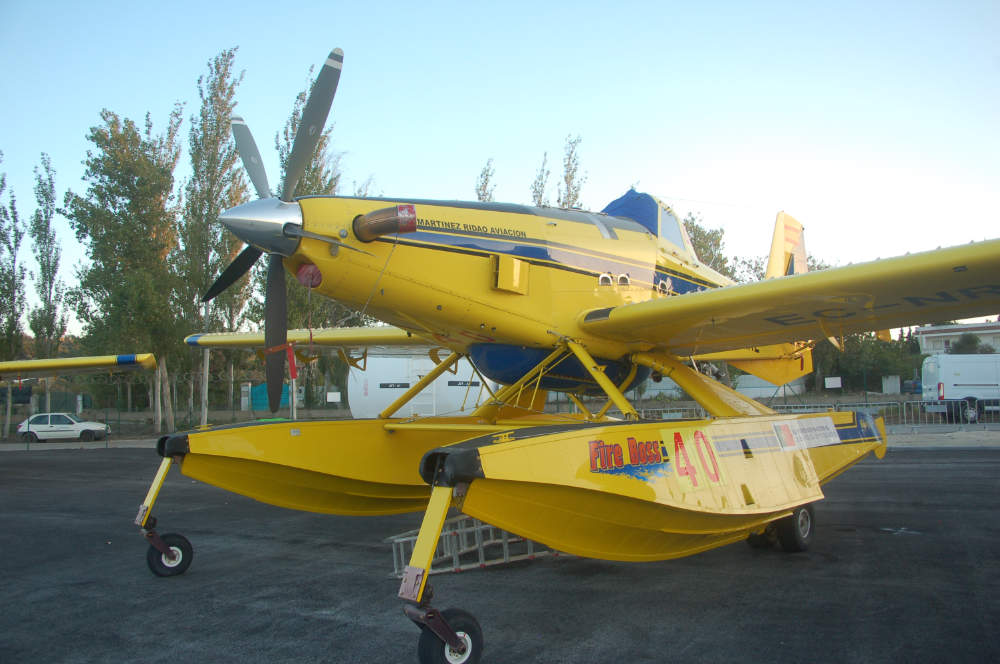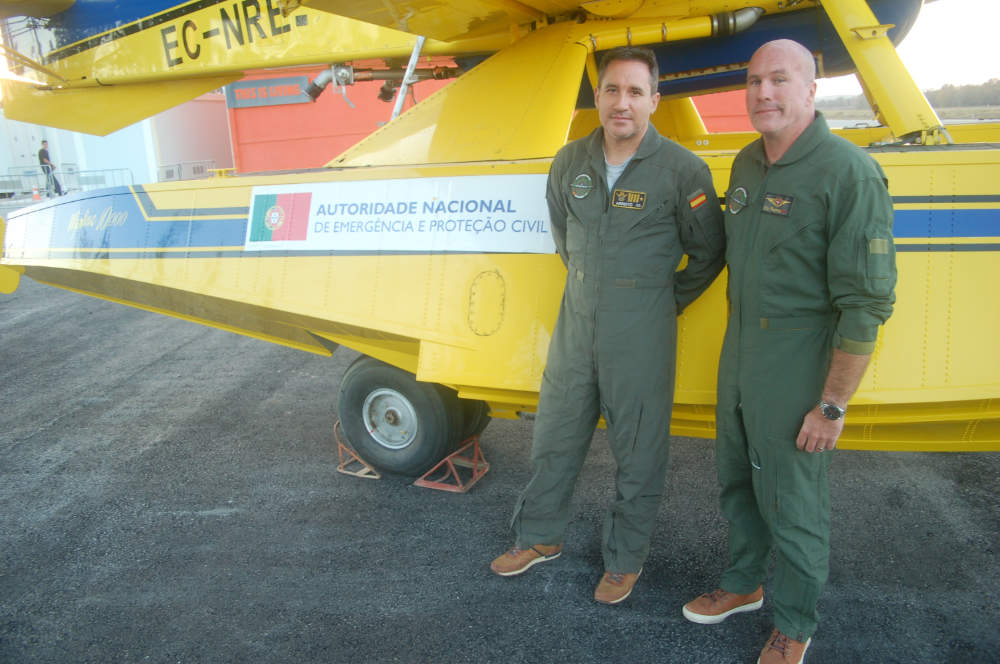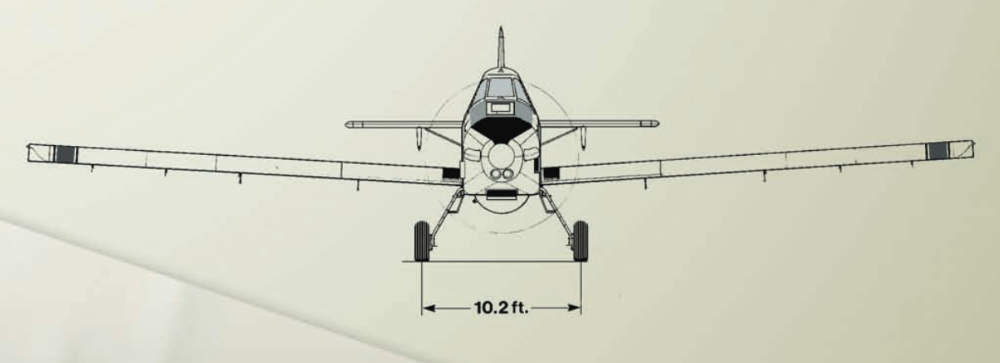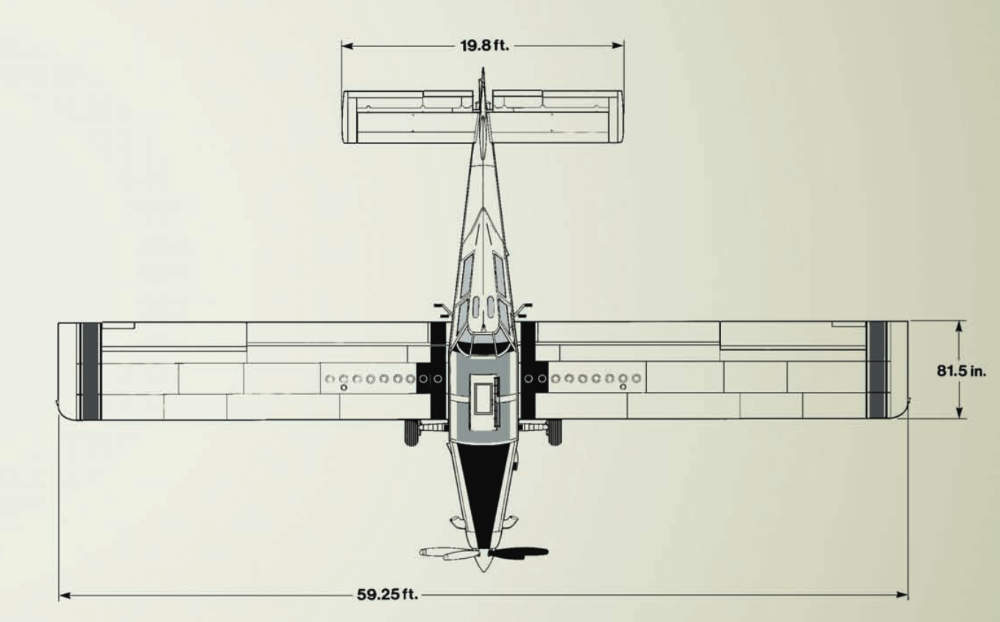Saturday 21st October 2023.
Those Magnificent Men in Their Flying Yellow Machines first came close to me on a Tuesday, 29 August. They came so close that they did get me a bit wet with the sheer quantity of water they offloaded from the sky, over 3,000 litres after all, weighing three tons. Their intended target was of course not me, but the last remains of a forest fire up on the summit of the Picota Mountain in Monchique, in southern Portugal. Yet it did prick my curiosity. The pilots had spotted the remains of a fire from the sky, and the fire services couldn’t find a way into the forest. At the same time I was researching the origin of the forest fire and could see the remains of a tree trunk, still smouldering. In most cases the fire hides in the roots of pine trees and cork oaks, and you only see the smouldering fire at night, or from the air. For the fire services dealing with a forest fire, this forms part of the follow-up work: to look closely whether there is still some part of the fire left here or there, and then put it out.
This particular fire had started on the afternoon of the previous day – that is to say, on Monday 28 August – and I’d already seen the two nimble yellow planes flying over my house in the direction of hell: those voluminous clouds of smoke working their way up towards the stratosphere, silently, looking like the mushroom cloud of a nuclear disaster. Once more, the mountains up there were ablaze, the fire annihilating animals, forests and livelihoods. The northwesterly afternoon winds were fanning the flames, again and again. It was only a question of time before they would reach the old cork oak forest at Corte Grande. As for us, amongst friends and neighbours, we have introduced an informal alert system. Everybody calls the other if and when a fire appears once more somewhere. What’s the idea here? To increase the lead time, to be warned as soon as possible. My friend Helge, his wife Lisa and their two children were in danger, and the fire would be able to reach the Karuna spiritual centre as well as the village of Fornalha. Slowly, a ghostly mood was spreading. The head of the fire was still five kilometres away. I was observing the smoke clouds with their heavy charge of CO2 very carefully, full of concern. This wasn’t the first time and it wouldn’t be the last.
Not even two hours later the two pilots, working in conjunction with the fire services and the helicopters, had mastered the fire, and the mushroom collapsed like a punched yeast dough. The industrial eucalyptus forest near the hamlet of Corte Grande – not looked after, nor cleaned up – had fed the forest fire well and already destroyed two houses. Don’t we know that the paper industry is always claiming that eucalyptus is the species that transforms CO2 into oxygen – sure thing, unless it’s not burning once again, for then, eucalyptus will produce CO2, in spades.
This year, for the first time, the fire services from Monchique and the surrounding districts received regional support in their fire-extinguishing efforts from the sky, by those Magnificent Men in their Yellow Machines. Their first sortie was in the Algarve for the Civil Defence service of Portugal, lifting off from the small Alvor airfield near Portimão, and they didn’t even take ten minutes to get to the upper reaches of the Monchique mountain range. Their missions have been spread out across the territory. They also helped extinguish the gigantic forest fire at São Teotónio in the neighbouring Alentejo region. Most of their time, the pilots spend sitting in a container in Alvor on the airfield waiting, waiting, and then waiting some more – for a mission order. From dawn to dusk they keep themselves and their yellow flying machines* at the disposal of the Civil Defence and Disaster Control authorities. Once the order comes in, the runway is cleared in seconds, leaving them to thunder across the concrete and lift off into the skies.
It’s the first 15 minutes that are decisive.
Why am I writing this here? Because for once these are some good news to report. This year, the missions of these two agile planes made a great difference to everything I’ve seen before in 33 years of covering the blazes as a journalist in Portugal. All of a sudden those damned forest fires are extinguished with water from the sky, released by agile planes, by planes that are fast and nimble, flown by pilots who are masters of their craft. The marvels of a correct decision on the part of the Civil Defence! Tax revenue sustainably invested, for the protection of our forest.
Smokers in the forest and a discarded cigarette butt. Meeting a smoker in the forest automatically raises my hackles. A red pick-up vehicle at a fountain, men filling canisters with drinking water. This is how far I got researching this case. All that’s needed now is the number-plate of the pick-up – then I’d have the presumed arsonists. On summer days in southern Europe, forest fires are caused by carelessness and negligence, again and again. This is less about deliberately laid fire but more about the recklessness and hubris of human action. To just not think. To flick a cigarette, still lit, into the undergrowth. Done and dusted.
I visit those magnificent men in their planes on one of their last days at the ground base where they have parked their flying yellow machines, on the Alvor airfield. Rui Vaz Ramos (44), the Portuguese part of the team, is now living in Portimão. Originally from Santarém, Rui is married and the father of two children. His day job is as a pilot, and he is passionate about his calling – yet he is also conscious of the risk involved and is always looking for a Plan B when flying into a fire to put it out, he reveals to me.
„In most cases I’ll release my water above houses that look like they’re about to burn,“ he emphasises . And then there’s his colleague from Spain. Carlos Arroyo Munõz is originally from Seville and 48 years old, also married, also father to two children. In this past summer of 2023 those two were working in the Algarve between 1 June and 15 October.
To be continued next week.
 Eco123 Revista da Economia e Ecologia
Eco123 Revista da Economia e Ecologia

